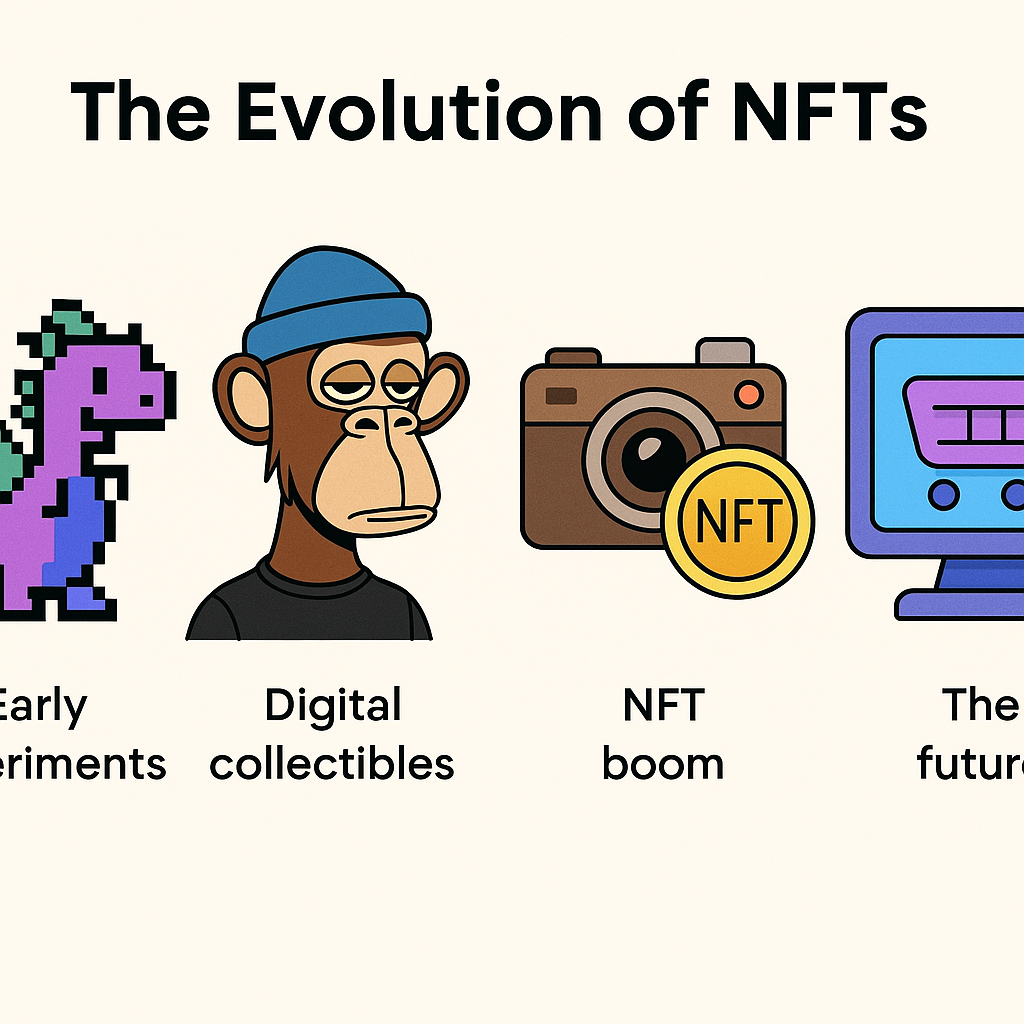The Revolutionary Journey of NFTs on OpenSea
Non-fungible tokens (NFTs) have undergone a remarkable transformation since their inception on platforms like OpenSea. What began as simple digital collectibles has evolved into a sophisticated ecosystem of utility-driven assets that are reshaping how we think about digital ownership, intellectual property, and value creation in the blockchain space.
The Early Days: Digital Art and Collectibles Revolution
🎨 The Beginning of Digital Ownership
The NFT journey started with digital art and collectibles on Ethereum blockchain. Pioneering projects like CryptoPunks and early digital art pieces on OpenSea marketplace demonstrated that digital items could have verifiable ownership and provable scarcity.
Key Milestones
- • 2017: CryptoPunks launch
- • 2018: OpenSea marketplace creation
- • 2020: Digital art boom begins
- • 2021: Mainstream adoption
Early Characteristics
- • Simple ownership verification
- • Limited utility beyond collecting
- • High speculation focus
- • Artist empowerment
Gaming and Virtual Worlds Integration
🎮 The Gaming Revolution
The next evolutionary phase saw NFTs entering gaming and virtual worlds. Blockchain games began incorporating NFTs as in-game assets, allowing players to truly own their digital items across different platforms.
In-Game Items
Weapons, armor, and collectibles
Virtual Land
Metaverse real estate ownership
Characters
Playable avatars and pets
Modern Utility-Driven NFTs
Today's NFTs offer substantial utility beyond mere ownership and speculation. They serve as:
🎫 Access & Membership
- • Access tokens to exclusive communities
- • Event tickets and VIP experiences
- • Discord server premium access
- • DAO membership and voting rights
💼 Professional & Business
- • Digital certificates for achievements
- • Professional credentials verification
- • Intellectual property protection
- • Brand licensing opportunities
🔑 Utility & Services
- • Premium content unlock keys
- • Software licenses and subscriptions
- • Service access tokens
- • Loyalty programs and rewards
💰 Financial Instruments
- • Revenue sharing mechanisms
- • Governance tokens for projects
- • Staking rewards and yields
- • Fractionalized ownership rights
Cross-Chain Evolution and Accessibility
The expansion of NFTs across multiple blockchains has been transformative. While Ethereum remains the dominant network for high-value NFTs, the integration of Polygon and Solana on OpenSea has democratized access to NFT creation and trading.
🌐 Network Comparison
| Network | Fees | Speed | Best For |
|---|---|---|---|
| Ethereum | High ($10-100+) | Slow (15s) | High-value collections, established ecosystem |
| Polygon | Low ($0.01-0.10) | Fast (2s) | Gaming focus, frequent trading |
| Solana | Ultra-low ($0.00025) | Ultra-fast (400ms) | High-frequency trading, microtransactions |
The Future of NFT Utility and Innovation
As we look ahead, NFTs are poised to become integral to numerous emerging technologies and use cases:
🆔 Identity and Verification
NFTs will serve as digital identity certificates, professional credentials, and academic achievements. Universities are already experimenting with NFT diplomas, while professionals use them to verify skills and accomplishments.
Applications:
- • Digital passports and IDs
- • Professional certifications
- • Academic credentials
- • Medical records
🛡️ Intellectual Property Protection
Creators will increasingly use NFTs to establish provenance and ownership of digital content, from music and videos to written works and software code.
Use Cases:
- • Music and audio rights
- • Video content ownership
- • Written work provenance
- • Software licensing
Conclusion: The Ongoing NFT Revolution
The evolution from simple digital art to complex utility tokens represents just the beginning of what's possible with NFT technology. As the ecosystem matures and new use cases emerge, platforms like OpenSea will continue to play a crucial role in shaping the future of digital ownership and value creation.
The journey from collectible JPEGs to sophisticated utility assets demonstrates the incredible potential of blockchain technology to revolutionize how we think about ownership, value, and digital interaction in the modern world.
